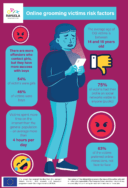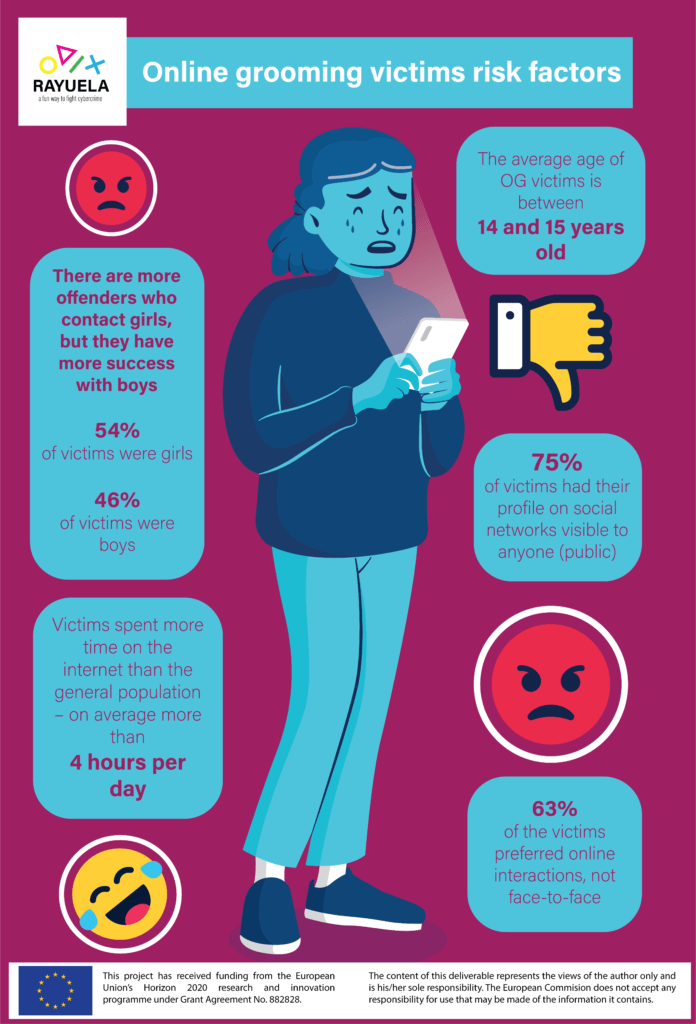Online grooming victims risk factors
The first thing to consider when discussing online grooming is that there is nothing such a victim profile. We may find some precipitant factors, but in words of most of the experts in the field: Any kid can become a victim. Nevertheless, risk and protective factors that have emerged through the research will be discussed in this epigraph.
A key aspect to be taken into account for the profiling and for the serious game is age. The literature proposed that online grooming is most prevalent in adolescence (Whittle et al., 2013). Specifically, some authors (Baumgartner, et al., 2010; Mitchell et al., 2001) proposed age ranges between 11-15 years as the ages of greatest risk. In contrast, other studies considered that the ages of greatest risk are between 14 and 17 years (De Santisteban and Gámez-Guadix, 2017a; Mitchell et al., 2014; Montiel et al., 2015; Wolak and Finkelhor, 2013).
Regarding risk factors found in previous research related to the victim background, some of them have appeared in our samples. Although it is not possible to determine the proportion of them, which may be low, some cases showed this kind of traumatic background, despite not being majoritarian. Nevertheless, specially in the cases of the court sentences, this information could simply not be available, while existing.
Johnson and collaborators (2019) have shown how having a previous history of abuse, poor mental health and low self-esteem increases the risk of becoming an online grooming victim. In our samples, some kids presented a previous history of disability, therapy, anorexia or sexual abuse, although, again, it was not mayoritarian. In addition, some of the victims referred to have school problems when the crime took place. Some offenders also state to take advantage of this variable: Success is half guaranteed when you find a vulnerable person, who is dependent, who does not have great self-esteem. Some experts point out that self-esteem may play a role especially in girls, which could be related with the most violent types of grooming including coercion, blackmailing and gender violence.
Regarding the family structure, economic and/or family problems (Whittle et al., 2013) together with poor family communication (Johnson et al., 2019) have been found as risk factors. Nevertheless, parental education level seems to be more relevant than family income (Villacampa & Gómez, 2016). In our samples, there were some victims with economic and family problems, but we cannot affirm that they were greater than the average population. According to the bibliography and experts’ opinion we can assume that family communication might be key for prevention.

